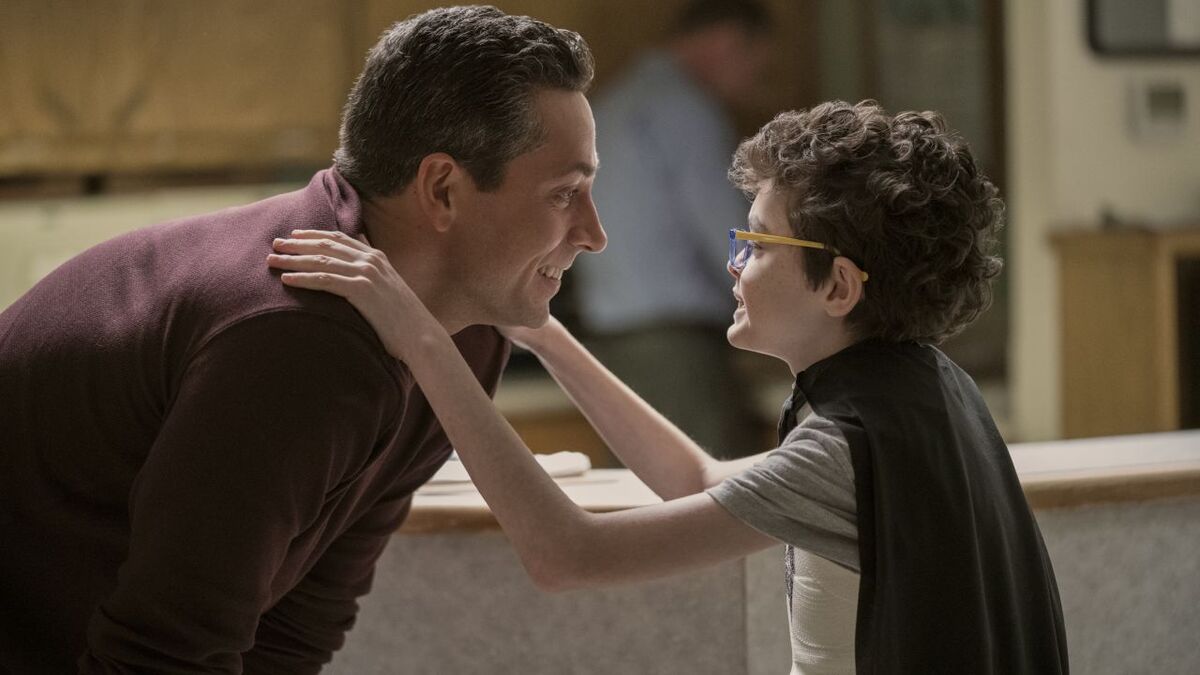
The sex-bots, as Minka Kelly’s Stahl wisely points out, are a development to benefit humankind: they’ll fill the roles human women once played, and therefore stave off disease or dishonour for the “living” kind. To Kennex, too, they’re appealing; they’re one step above your regular robot in how they’ve been immediately idealized for their curves, plump lips, and the wiring that tells them to bond with their clients and bond with their co-workers. But the dialogue employed by the two sexbots is as cipher-ish and naive as one might expect of the paper-thin Manic Pixie Dream Girls, or ingenues, that populate today’s popcorn films. Despite their circuitry telling them to exist and to connect, they’re unable to present any third dimension. Dorian, by comparison, is plagued by his third dimension of emotions, though he lacks the extra element of humanity they do: skin.
Whether this is a metaphor for varying levels of vulnerability is unclear – for the sex-bots, their skin’s a vulnerability in that it’s tangible and a weapon for their destruction, whereas Dorian keeps his tendency towards humanity mostly buried, yet the two subsets of robot are linked by what they border: proper existence. Ealy’s glorious in these moments; he never simmers, for it’s likely that rage or frustration are emotions a robot can only access marginally, given their tendency to be explosive. However, he’s filled with a quiet pity that precisely borders calculation and spontaneity. The sequence where he waits out the destruction of one illegal sexbot is promising for future episodes, suggesting that Almost Human has questions to raise on the matter of the line between machine and human.
Kennex, too, is presented with his own slew on what precisely entails a relationship – and furthermore, what possibilities of connections he might share, or ought to revisit in the near future. While Dorian’s subplot of setting his partner up with an online dating profile is played for laughs (and, as a whole, comes out of the woodwork), it raises a pertinent question: what personas can we create for ourselves while seeking affection? And given Kennex’s undeniable interest in the sex-bots, is there a possibility technology could fill that void? The brief interlude he shares with Victor, the child left behind by the abducted mother at the heart of tonight’s A-plot, is particularly lovely. While the leap from gruff, distant police officer to teddy bear-like protector feels rather an abrupt leap in character development, Urban sells the reveal of Kennex’s warmth with typical understated charm.
Despite the tendency of characters to sermonize, it’s rare that a show strikes its emotional heart in the first few episodes – here, Almost Human’s the exception. Rarer still is the show that makes sense of its direction by the second episode. Here, Almost Human’s not the exception: we’ve yet to see a concrete through-line emerge, though the material’s enough to let the show float for now.










Published: Nov 19, 2013 10:25 am